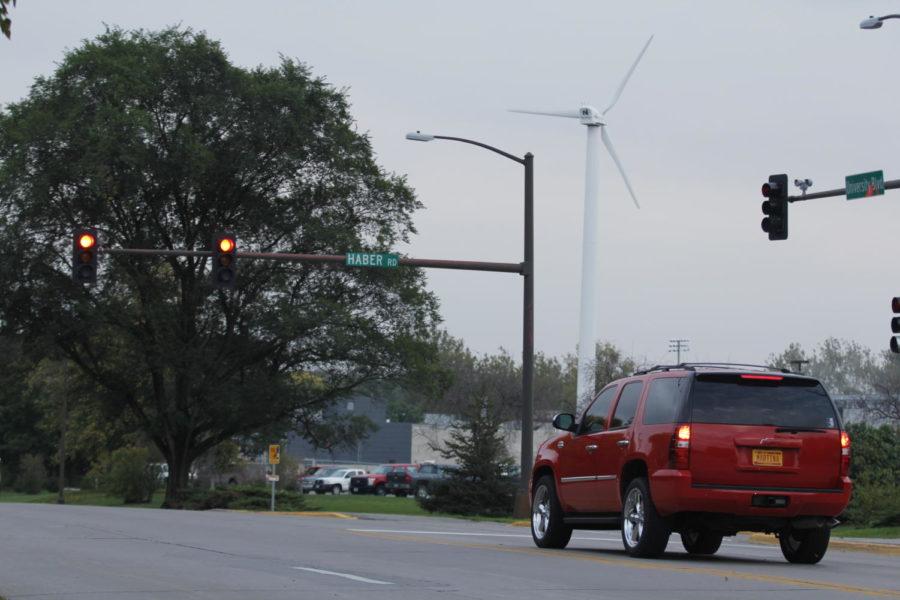Iowa State receives grant for taller turbines
October 6, 2014
The Iowa State College of Engineering received a $1 million grant from the U.S. Department of Energy to continue researching how high-strength concrete can be used to build taller wind turbines.
“We are currently using steel tubular towers, but extending their height beyond 80 meters is not cost effective,” said Sri Sritharan, professor in environmental, construction and civil engineering.
When a wind turbine exceeds 80 feet, the base needs to get bigger, making them impossible to transport in one piece.
Sritharan has spent the past five years researching a new design for wind turbines. He thinks using high-strength concrete, developed in partner with Coreslab Structures, a concrete manufacturer based in Omaha, will revolutionize the wind energy industry.
There are several benefits in building taller wind turbines, Sritharan said.
“If you move the turbine height from the currently used 80 meters, to 120 meters, you can actually operate the turbine for a longer duration and also the wind speed is going to be greater, which is going to increase the power as well,” Sritharan said.
Currently, Iowa leads the nation with 27.4 percent of its energy coming from the wind. However, the U.S. as a whole only gets 3 percent of its total power from wind.
Making the turbines taller will allow states on the East and West Coast, where the wind power needed to generate energy is only available above 80 meters, to develop wind farms.
Sritharan said once the towers are completed, we will see an increase in the national wind power output.
The turbines will not only help produce energy for states, but according to Mike Prior, executive director of the Iowa Wind Energy Association, the most important thing wind energy will create is jobs.
The wind energy industry currently provides Iowans 7,000 jobs, but Prior expects that number to rise. As the turbines start growing taller, states on East and West Coasts will start producing their own wind energy.
An increase in demand for the parts used to make the turbines can create jobs, a demand producers in Iowa can meet, Prior said.
Wind turbines don’t only have an economic impact, but an environmental impact as well.
Prior said one of the ways wind energy helps the environment is by reducing reliance on hydroelectric energy. When water is harvested for energy, chemicals are spilled into the water source, polluting it.
Iowa State was one of 24 colleges and universities to receive a perfect score on the Princton Review’s Green Honor Roll.
“I’ve been excited with the different ways that we are looking at energy on campus,” said Merry Rankin, director of sustainability at Iowa State. “That being said, we have plenty of opportunity to increase our diversity of [green initiatives] we are doing, and increase the impact we all could have.”
In two years, when Sritharan’s turbines are ready, he does not expect to see immediate change. He said it would cost too much to tear down existing wind turbines and install new designs.
Sritharan said he thinks his design will replace old models slowly as the existing turbines give out and people start reactivating old wind farms.







